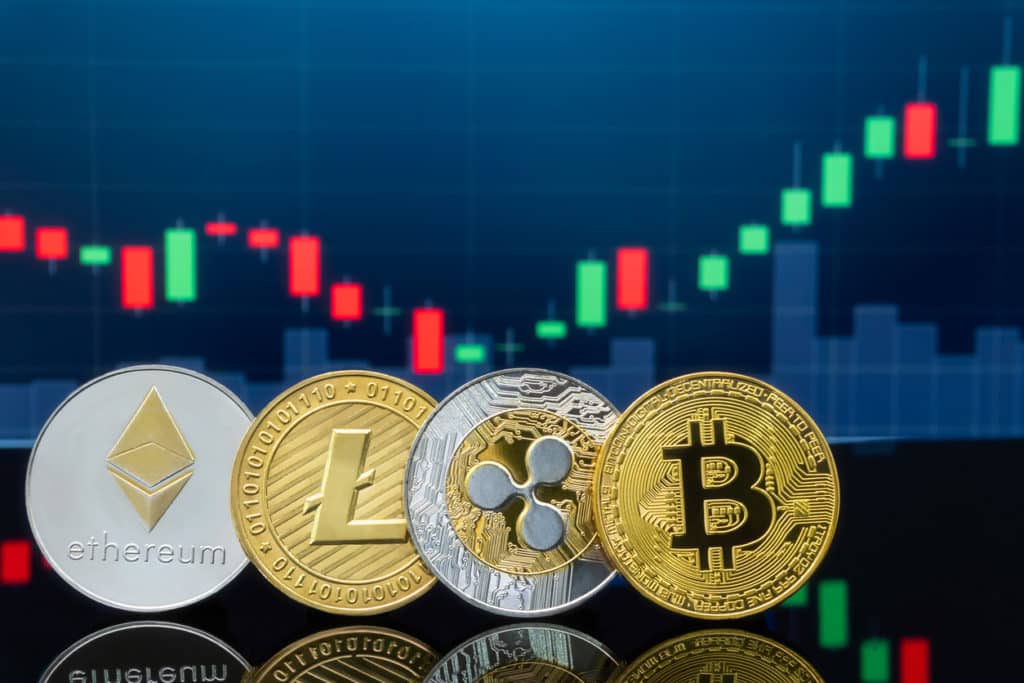

Giovanni Vicioso, global head of cryptocurrency products at CME Group, said a differentiator for the firm is that it is a regulated marketplace offering regulated products that brings transparency and price discovery, so clients can efficiently transfer risk.
Vicioso told Markets Media: “We are one of the world’s largest derivatives exchanges with a proven track record over 175 years, and that sets us apart from unregulated platforms, some of whom have only been in existence for less than a decade.”
On 11 November crypto exchange FTX Group, regulated in the Bahamas, filed for bankruptcy protection. In 2021 FTX had purchased LedgerX, a CFTC-regulated designated contract market, swap execution facility and derivatives clearing organization, and rebranded the business to FTX US Derivatives, although this business was not included in the Chapter 11 filing.
FTX had filed with the Commodity Futures Trading Commission to introduce a non-intermediated clearing model for crypto derivatives. Terrence Duffy, chairman and chief executive of CME Group, had objected to the proposal and said it would represent a dramatic change to the market structure of the derivatives industry, and set a precedent with wide ranging negative implications for the safety and soundness of US financial markets.
“CME Group is a clearing house so we can guarantee clearing and settlement of transactions on our exchange and you will never hear us use the term auto liquidate or clawback,” said Vicioso.
Volume growth
As a result of the collapse of FTX, CME has seen a lot of participation as clients worked to manage their risk amongst the volatility according to Vicioso. “There were records in bitcoin futures and ether futures and options, as well as an overall crypto complex daily record of 207,000 contracts,” he added.
On 8 November the entire crypto suite had a record trading volume of 207,205 contracts.
Vicioso continued that CME’s cryptocurrency product suite has continued to see consistent volume and open interest growth despite the challenging backdrop that the broader cryptocurrency market has faced in recent months. In addition, institutional participation has increased more than 30% in bitcoin futures large open interest holders in the third quarter versus the same period in 2021.
“This is particularly noteworthy as those type of entities are holding 25 or more of our bitcoin contracts, which is equivalent to, at least, 125 bitcoin, worth about $2m at current market prices,” he said. “Our transparent rules and regulations, operational controls and highly robust liquidity continue to allow customers to hedge against bitcoin and ether price swings.”
Clients already trading CME Group products can easily add bitcoin futures or ether futures, so it is more of a plug and play into their existing strategies.
What's new in CME Group's cryptocurrency market? Learn more about record open interest in Q3, new products and other market updates in the latest Crypto Insights report. https://t.co/AEDTgmCHnF pic.twitter.com/PXiaWSZipg
— CME Group (@CMEGroup) October 25, 2022
Vicioso has had a baptism of fire since he was named to his current role in October. He joined CME Group in 2012 as senior director of equity products, where he began his involvement in the cryptocurrency business as he also worked in alternative investments.
“The latter allowed me to explore the potential for futures and index-based products in new assets including commodities, real estate, water, and cryptocurrencies,” he added.
The group introduced the CME CF Bitcoin Reference Rate in November 2016 and as customer demand grew for a cash-settled futures product, and CME bitcoin futures in December 2017. He described bitcoin futures as tremendously successful with a compound annual growth rate of about 70% and an average daily volume of more than 13,500 contracts.”
Institutions first look to bitcoin and, as they become comfortable, they quickly look to migrate to ether. CME introduced an ether reference rate in 2018, and then futures in February 2021.
“The number of large open interest holders, who hold at least 25 contracts for ether futures, grew to 50 in less than a year, while bitcoin futures took more than two years,” added Vicioso. “So institutions are adapting more quickly.”
When the price of cryptocurrencies rallied last year, CME introduced micro contracts which allowed the exchange to capture retail interest. However, institutions are also using micro contracts to test new strategies or fine tune their exposure and risk management needs.
Some clients would like to pay margin for crypto futures in crypto. Vicioso said: “It is something we are exploring but is still in the early stages of development and will take some time.”
In addition to launching tradable products, CME has also introduced 14 additional reference rates and real-time indices this year.”
“Our suite of non-tradable reference rates provide trusted price discovery on a regulated venue in a fragmented market which develops comfort amongst market participants for tradable products,” added Vicioso.
Launching Oct. 31: three non-tradable Cryptocurrency Reference Rates and Real-time Indices, developed in partnership with @CFBenchmarks. Transparent pricing is coming to Avalanche, Filecoin, and Tezos. https://t.co/xLhgmiUqMQ pic.twitter.com/H1AXYxg7az
— CME Group (@CMEGroup) October 6, 2022
Banks are also clearing more of CME’s crypto products and beginning to trade the contracts to hedge over-the-counter transactions which serve their hedge fund clients.
“We are going to continue to build our dominance in bitcoin and ether contracts where we have market-leading volumes and open interest and we have been introducing non-tradable reference rates, including tradable bitcoin and ether futures and options products, every month since December of last year,” he said. “We are going to continue this cadence of innovation, and product introduction.”
Nearly half, between 40% to 45% of CME’s crypto volume comes from outside the North American region. Crypto trades around the clock and CME is open from 6pm ET Sunday evening to 5pm Friday evening ET with a one hour maintenance window every day between five and six.
Genesis prints first CME BTIC #Bitcoin contract with 4PM NY settle. See below for perspective from @Joshua_J_Lim, Head of Derivatives. pic.twitter.com/eRxnSZl6AI
— Genesis (@GenesisTrading) July 25, 2022
CME has also introduced reference rates of the U.S. dollar price of bitcoin and ether at 4 p.m. New York time in addition to London time. A mechanism, known as Basis Trade at Index Close (BTIC), allows market participants to trade bitcoin and ether futures relative to either of those reference rates.”
Vicioso added that, as always, additional futures contracts will be driven by customer demand but also greater regulatory clarity.
“We have single coin indices but there is interest in a basket of cryptocurrencies, so that is on our radar,” he said.




